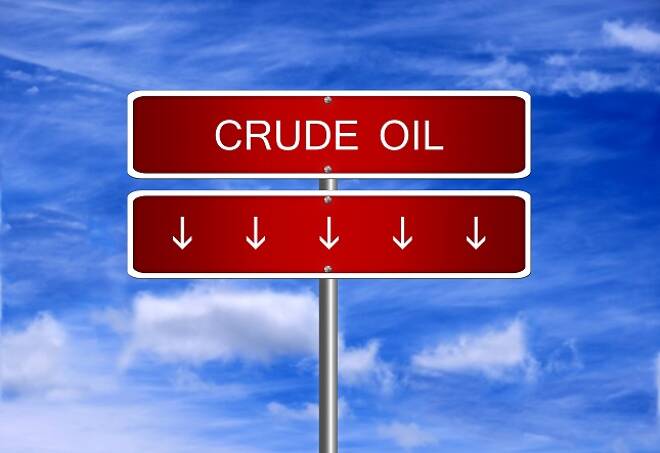Advertisement
Advertisement
Supertankers Full Of Oil With No Place To Go
By:
Crude oil prices continued to fall on Wednesday as weekly EIA inventories printed larger than expected. Oil is down over 2.5% at 41.83 giving up 1.11
Crude oil prices continued to fall on Wednesday as weekly EIA inventories printed larger than expected. Oil is down over 2.5% at 41.83 giving up 1.11 while Brent oil outpaces WTI falling 3% to 43.85. Even news of a larger than expected stimulus package from Japan did little to stop oils decline. The EIA weekly report data revealed the first weekly climb in domestic crude inventories in 10 weeks, a surprise increase in gasoline stockpiles and a rise in total crude production. Prices fell to their lowest levels in more than three months with a surprise increase in gasoline stockpiles and a rise in total crude production.
[wibbitz]b895e99e4ab7b408bb61eb72d14fde9f6[/wibbitz]
Total domestic crude production rose by 21,000 barrels to 8.515 million barrels a day as output in Alaska grew, though it fell by 12,000 barrels to 8.033 million barrels a day in the lower 48 states.
Gasoline supplies also climbed by 500,000 barrels, while distillate stockpiles fell by 800,000 barrels last week, according to the EIA. The S&P Global Platts analyst survey showed expectations for a drawdown of 700,000 barrels for gasoline stocks and a rise of 400,000 barrels for distillates, which include heating oil.
Marketwatch reported that compared with February, when oil hit around $26, prices have risen significantly in the past five months, thanks to several supply disruptions such as workers strikes in Kuwait, wildfires in Canada’s oil sand production hub, and militant attacks in Nigeria. But some of these factors have ended or are coming to a close, raising concerns over a growing supply of crude and oil products.
In the U.S., despite the annual driving season, gasoline stocks there are at 241.5 million barrels—” well above the upper limit of the average range,” the EIA said.
China, the world’s second-biggest consumer of oil, has also ramped up its exports of distillates in the past few months in a bid to dump its unwanted barrels to the regional market.
There is uncertainty about inventory levels, given an increase in the number of supertankers used as temporary storage, by trading companies which do not have to declare the amounts stored.
According to the last monthly report from the Organization of Petroleum Exporting Countries (OPEC), released in Vienna two weeks ago, European oil demand this year is expected to reach 13.4 million barrels per day, almost the same level of 13.71 million barrels per day of 2015.
Additionally, there is uncertainty about inventory levels, given an increase in the number of supertankers used as temporary storage, by trading companies which do not have to declare the amounts stored. For instance, according to Thompson Reuters, at the start of this month there were 23 supertankers anchored around Singapore, holding 43 million barrels of oil, an increase from 15 vessels anchored at the start of this year.
This year, OPEC projects an increase in its members’ production to 31.9 million barrels per day and 33 million barrels per day in 2017. Also, it expects demand increases, from last year, by 5.6% in India and 2.5% in China, 1.7% in the Middle East, 1.1% in the Americas and almost 0.2% in Europe.
The World Bank issued its latest report on the sector yesterday, upping the estimate for the average oil price this year. But at $43 a barrel, the commodity is still expected to end 2016 lower than it is now.
Other analysts think things could be even worse. Michael Wittner, the head of oil research at Societe Generale, said he believes there is a “soft floor” for oil at around $40 a barrel, but that it was possible it could fall further before hitting a bottom.
Analysts at Morgan Stanley said a return of US shale production could prompt a supply excess from August, which would push oil lower. It believes a bottom could yet be found in the mid-$30s.
Few expect a return to the ultra-bearish conditions from earlier this year, however, which prompted oil to slump to a 13-year low of $27 a barrel in February.
About the Author
Barry Normanauthor
Did you find this article useful?
Latest news and analysis
Advertisement
